
Your guide to positive reinforcement dog training

Philippa Short
11 February 2022 | 11 minutes read
Ever heard the phrase ‘positive reinforcement’ and wondered how it works with dogs? Dog training expert Philippa Short gives you the lowdown on what it means to use positive reinforcement for teaching your pup. You’ll also get top tips for nailing some of those basic cues using reward-based training.
Table of Contents
- What is positive reinforcement in dog training?
- What are the first steps towards positive reinforcement dog training?
- What if positive reinforcement reward training isn’t working by itself?
> How to use mutually exclusive behaviour and positive reinforcement for dog training
> How to use management tools and positive reinforcement for dog training - What are the different positive reinforcement dog training techniques?
> How to train a dog to sit with positive reinforcement
> How to train a dog to lie down with positive reinforcement
> How to train a dog to stay with positive reinforcement
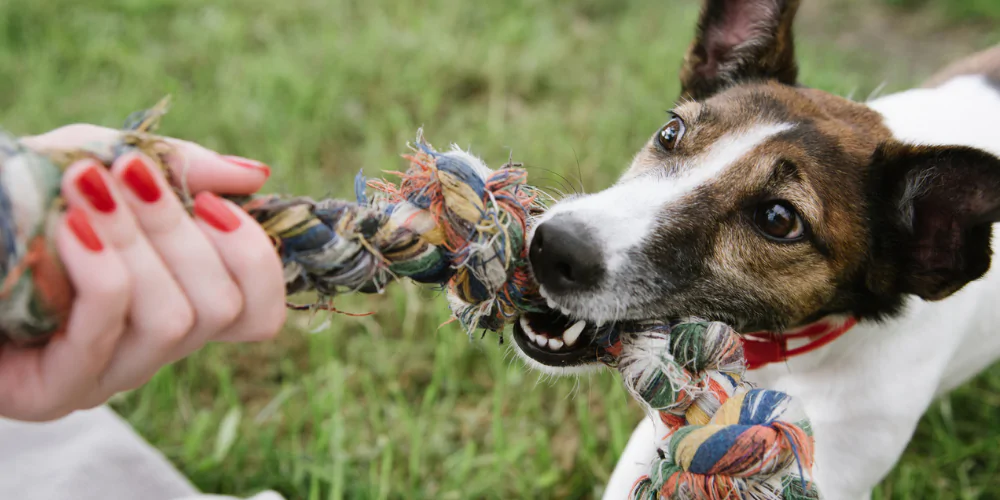
What is positive reinforcement in dog training?
One of the biggest misunderstandings about positive reinforcement and dog training is the idea that you have to be liberal with your dog. You also can’t disagree with their behaviour. Positive reinforcement is all about putting your dog into a position of success – you’re rewarding them for making good choices.
Choosing reward-based dog training helps to:
- Build the strength of the bond between you and your pup
- Reduce potential stress
- Clearly tell your pooch exactly what you want from them
A key thing to remember – anything that’s reinforced gets repeated. As humans, we sometimes let ourselves focus too much on the negatives and lean towards punishment. By making it clear to your pup when they’re doing things right, and rewarding them for those good choices, they’re more likely to do those things again.
You’re looking to create a trusting relationship with your dog and work as a team. When you have that strong bond, your pup will enjoy your company and want to be around you. They’ll listen and pay attention, as well as want to get things right.
There’s a few different ways you can set your dog up for success when training:
- Manipulating the environment around you
- Having the right kind of reinforcement
- Planning ahead for what might happen
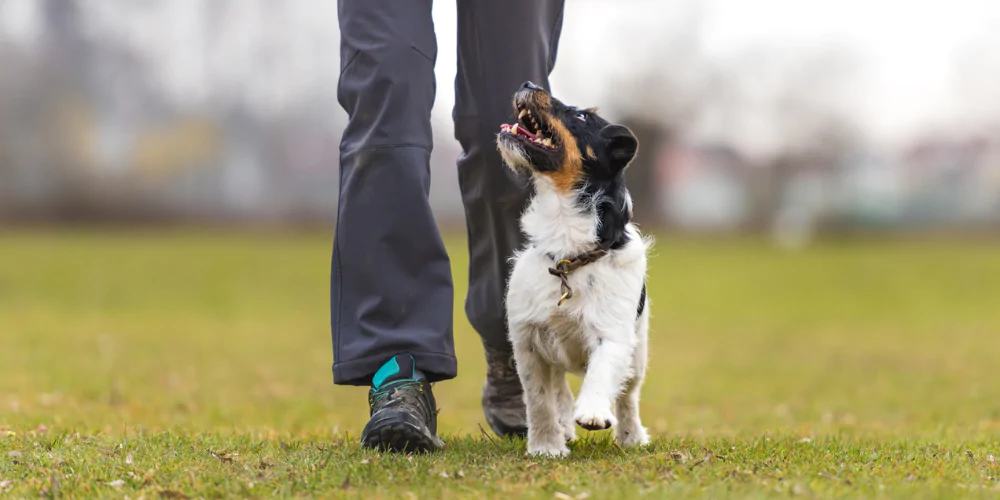
What are the first steps towards positive reinforcement dog training?
The aim of training your dog is to build up polite manners. Positive reinforcement rewards them for showing this good-mannered behaviour.
Start by choosing a reward. The reward is different for each dog, so find out what your pup loves the most. It could be:
- High-value foods or treats – remember to take this out of their daily food allowance.
- A favourite toy – they may also love some direct playtime with you and the toy.
- Getting praise – some pooches love petting and fuss more than anything else.
- Giving them access or freedom, known as a ’functional’ reward – an example of this is letting them off their lead or opening the door to the garden after they’ve followed a cue.
Once you’ve worked out what your dog sees as a reward, the next technique to bring in is a marker word or sound (such as a clicker). This is a powerful communication tool that makes it clear to your dog exactly what you’re asking of them:
- Pick the cue you’re going to teach and start guiding them into the behaviour.
- As soon as they show the correct behaviour, immediately use the marker word or sound.
- Straight after marking the behaviour, give them a reward.
It’s all about timing with marker words and sounds, so you’ll want to stay focused and reward the exact moment they get it right. When teaching the sit cue, for example, mark and reward the moment their bottom touches the ground.
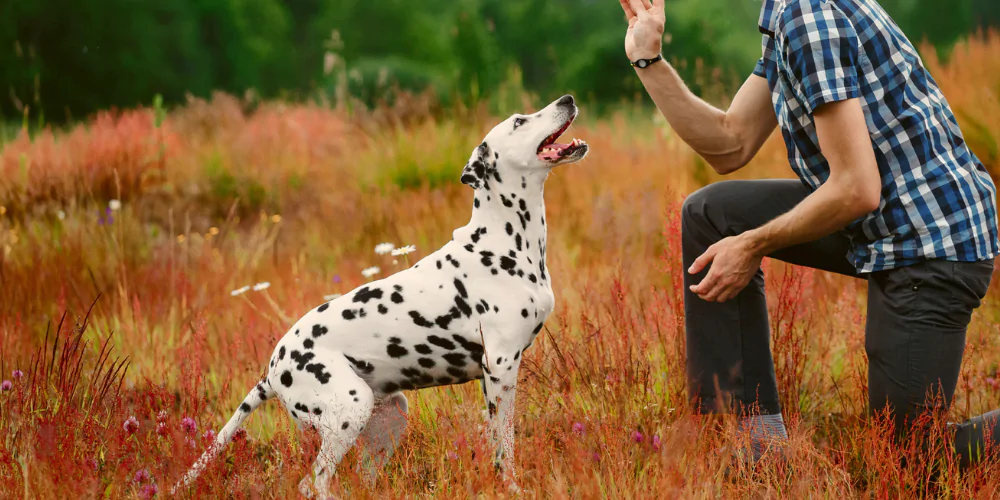
What if positive reinforcement reward training isn’t working by itself?
Anything your dog practises becomes a habit. Sometimes positive reinforcement isn’t enough to keep your dog focused on their training – and that’s OK.
You can teach your dog good manners through a technique called ‘mutually exclusive behaviour’ (MEB). Your dog learns that two different behaviours can’t happen at the same time, so they have to choose one or the other. Picking unwanted behaviour doesn’t get them anything while choosing polite behaviour gets them a reward. For example, either jumping up at you or sitting nicely and waiting for attention.
You can also bring in some management tools to help with this. Management tools can help to control the environment so your positive reward techniques can really thrive and work well. They’re a temporary solution to help stop your dog practising bad or unwanted behaviours.
Some of the different dog training management tools you could use include:
- Dog gates
- Crates
- Puppy pens
- Long lines
- Muzzles
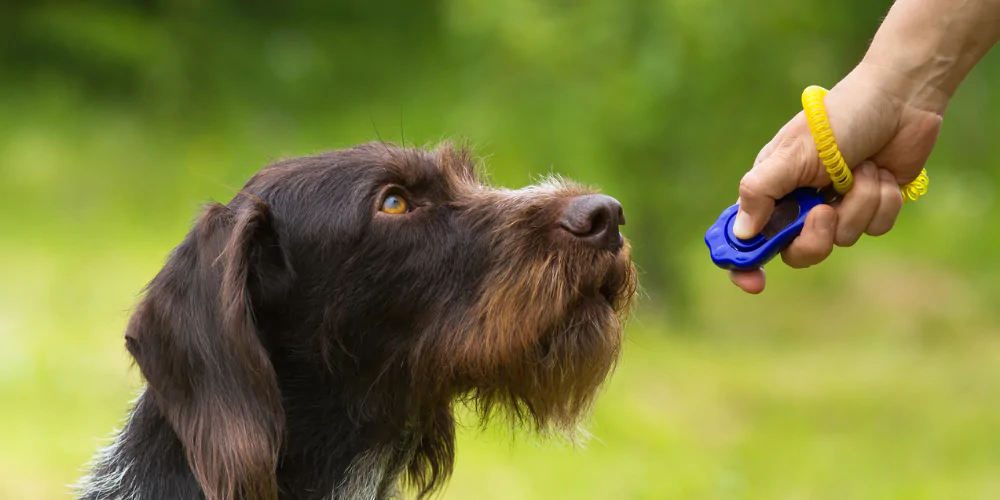
> How to use mutually exclusive behaviour and positive reinforcement for dog training
So, how do you bring management tools, mutually exclusive behaviour, and positive reinforcement together for successful dog training?
Let’s use the example of teaching your dog to stop begging at the table for food. For this, you’ll bring in the stay cue:
- Start by giving your dog their dinner, so they’re not hungry.
- Next, place a mat four feet away from the dining table. Get your dog lying down on the mat so they’re comfortable and ask them to ‘stay’.
- After they’ve stayed on the mat for a minute or two, give them a reward.
- If they come to the table and start begging for food, ignore their behaviour and lead them back to the mat.
- Keep doing this until your dog starts to learn that the stay behaviour gets them their treat, not the begging behaviour.
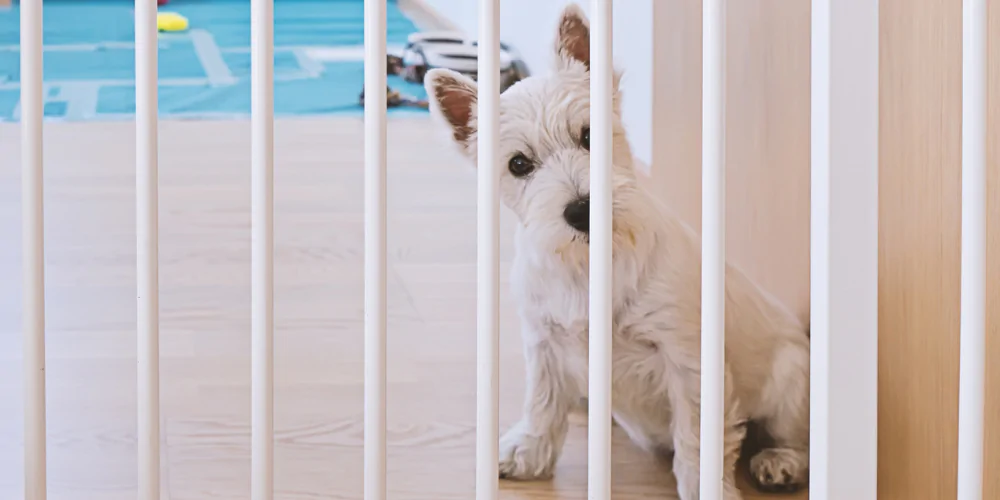
> How to use management tools and positive reinforcement for dog training
Repetition and consistency are key. What happens If you’re too distracted to repeat and encourage polite behaviour? That’s when you can bring in a management tool.
With this same table begging example, this could look like:
- Keeping your dog behind a baby gate, so they can still see you but not reach you.
- Putting them in a crate with a Kong or puzzle toy to keep them occupied while you eat.
A management tool can also be useful when your dog begins to ‘forget’ their polite behaviour, and you need to bring some control back into their training.
For example, you’re teaching your pup recall. Normally they come back nicely to you when called, but that day they’re having ‘selectiveness deafness’. You could:
- Put them on a long lead, so they can be away from you but at a controlled distance.
- Take them to a quieter area where they can’t be as easily distracted when called back.
- Take them to a smaller or completely enclosed space, which takes away their opportunity to run away. This not only gives back control but also reduces the stress that they could get lost.
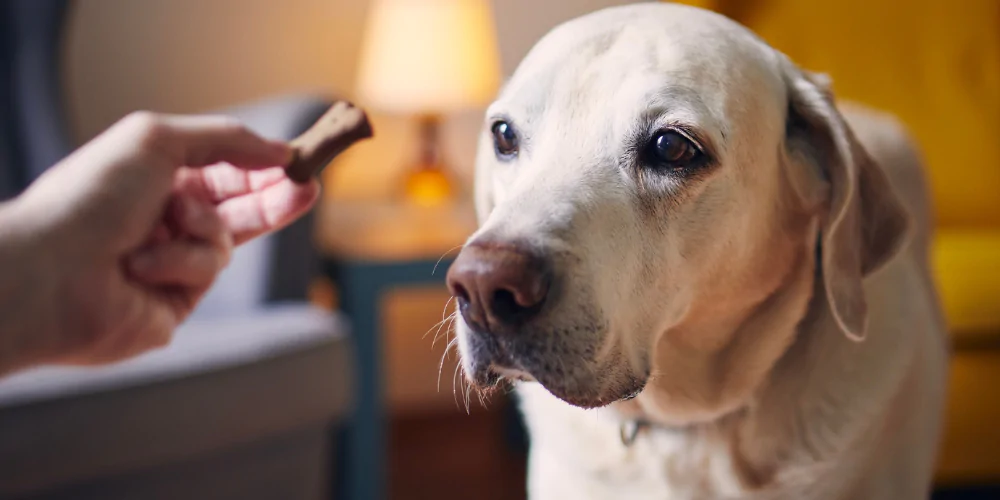
What are the different positive reinforcement dog training techniques?
There are five ways to train your dog cues, while still using positive reinforcement:
- Social learning – your dog copies the behaviour from you or another dog.
- Shaping – break down the cue into smaller steps or movements.
- Luring – hold a treat in front of your dog’s nose and use it to guide them into the position you want. This is one of the most popular techniques, especially in puppy training.
- Gentle physical moulding – carefully and gently guide your dog into the wanted position using your hands.
- Capturing – watch for when your dog naturally performs the behaviour without the need for guidance and reward straight away.
Although your dog may initially get on well with one specific technique, this can change depending on the cue you’re teaching them. So don’t be afraid to mix it up and try different techniques for different behaviours.
Once your pup has got to grips with the basic cue you’re teaching them (using your marker and reward), you can then bring in the ‘three D’s’ of dog training:
- Distance – how far apart your dog can be from you without breaking the cue.
- Duration – how long your dog can hold the behaviour or cue.
- Distraction – how well your dog can keep up the behaviour with distractions around them.
Concentrate on one ‘D’ at a time and build up slowly until your dog has achieved it, then move on to the next one. If you find your pooch is struggling to get it right, don’t get frustrated. Go back a step and start again. Pushing your dog too hard will set them up to fail.
With any training, be guided by your dog. Some pups find duration a difficult skill to master because their body shape makes sitting for long amounts of time uncomfortable. All dogs are individuals, so if you need a little bit of extra help with your pup’s training, get in touch with a reward-based dog trainer in your local area.
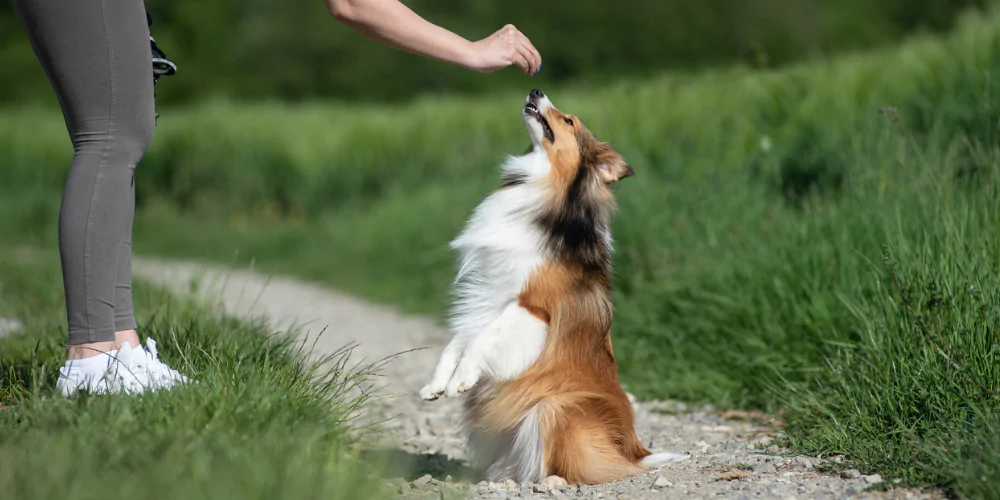
> How to train a dog to sit with positive reinforcement
Here’s one example of how you can train a dog to sit with positive reinforcement.
You’re going to use the luring technique for this:
- Place a piece of food or treat in front of your dog’s nose.
- Slowly raise up the treat so your dog’s head follows. Their bottom should instinctively begin to lower to the floor.
- As soon as you see their bottom touch the floor, mark the behaviour and immediately reward them.
- If your pup is struggling to move into the right position, you can try bringing in the physical moulding technique to help. As you lift the treat, gently run your hand along their back to guide their bottom to the ground.
Keep in mind that you are using a gentle guiding hand only – don’t push on your puppy’s back end.
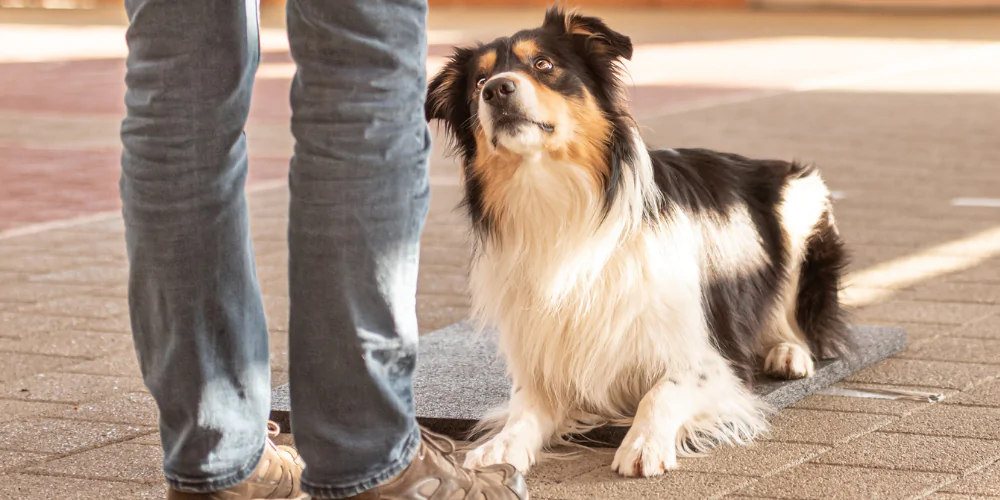
> How to train a dog to lie down with positive reinforcement
Next, let’s go through an example of how to train a dog to lie down with positive reinforcement.#
Again, we’re using the luring technique here, and you can teach them this cue from either a sit or standing position:
- Place food in front of your dog’s nose.
- Lower the food straight down to the floor, in between their paws.
- As your dog’s nose follows down, slowly pull the treat a small distance away from the paws, moving it in an ‘L’ shape.
- Your dog’s nose should reach to follow the treat, and then their body will naturally stretch out along the floor. As soon as you see this stretch, mark and reward.
- Moving the treat out too quickly may cause your dog to stand up, so take your time and reset if needed.
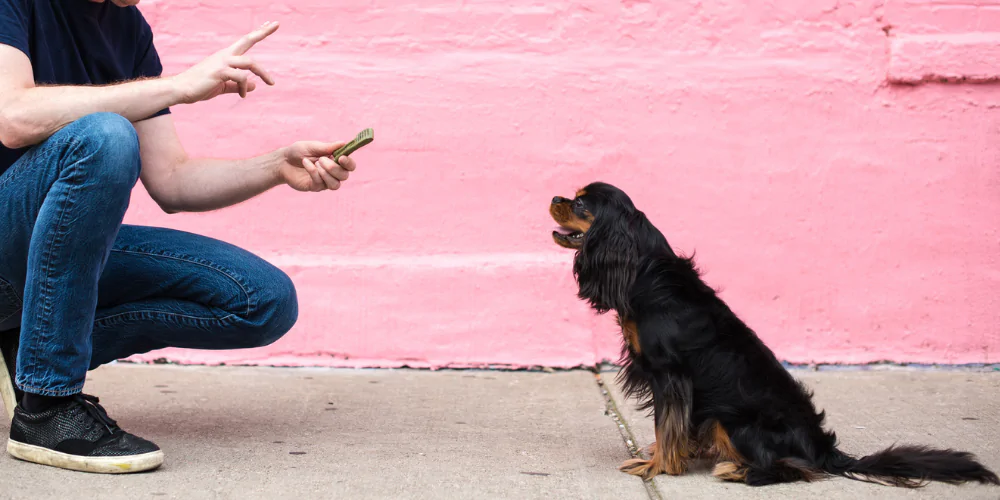
> How to train a dog to stay with positive reinforcement
When it comes to training your dog to stay with positive reinforcement, you’re going to be bringing in all three of those ‘D’s’.
To begin with, you need to be confident your dog is comfortable with a certain amount of ‘duration’ in their sit, stand or lie down position:
- Begin by standing in front of your dog and getting them to sit, stand, or lie down.
- Reward them for staying in that position for a few seconds.
- Slowly build up the amount of time they stay in position before they are rewarded.
When you’re comfortable with the amount of time they can stay without breaking position, you can start bringing in ‘distance’:
- Use the marker word ‘stay’ and slightly move your body from side to side. This is telling your dog your body might move, but they’ll still be rewarded for staying in position.
- When your pup is comfortable with this, place one foot a small distance behind you, pivot on that foot, and then step back. Step forward into your original position, and then repeat this back and forth, rewarding your dog for staying in position.
- If your dog moves with you, reset them in a different position (for example, try a sit position if they were standing before) and go back a step.
- Once your dog is comfortable keeping a 10 second stay when you’re one foot away, try moving two steps away. Slowly continue to build up your distance.
Want to build up their ‘duration’ instead of ‘distance’?
- Go back to standing one foot away. See if your dog is comfortable staying in position for 20 seconds, then 30 seconds. Slowly building up their stay time and reward as you go.
- Happy that your dog has nailed their distance and duration? Try bringing in the final element – distraction. Take them to a quiet and non-distracting area first, building up to more distracting areas like playgrounds.
There are many ways to care for your pup, from creating a trusting relationship to keeping them healthy and active. Petsure dog insurance gives you the confidence your pup is covered when they need it most.


